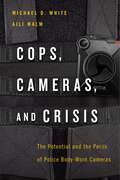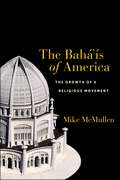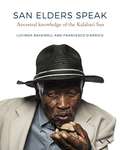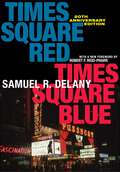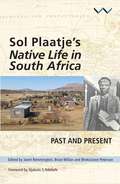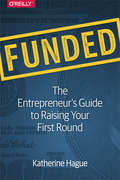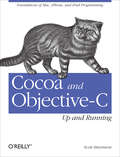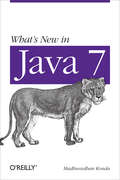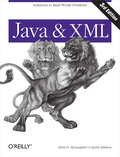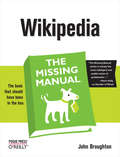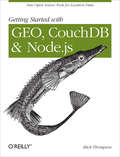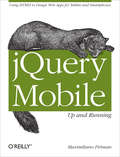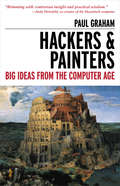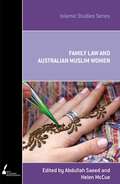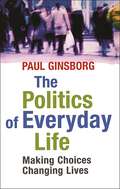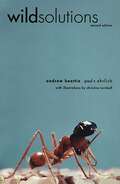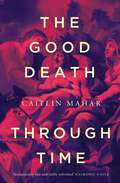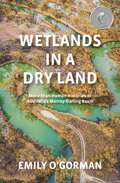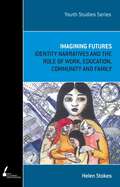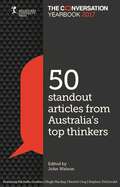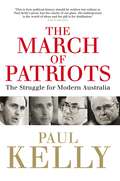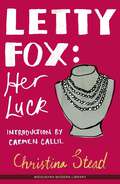- Table View
- List View
Good Guys, Bad Guys: The Perils of Men's Gender Activism
by Emily K. CarianExplores questions of masculinity, privilege, and identity to explain why some men become feminists while others become men’s rights activistsIn the evolving landscape of gender activism in the United States, it is intriguing that four-in-ten American men now identify as feminists. Despite this seemingly positive shift, gender inequality remains deeply rooted in the US. Good Guys, Bad Guys delves into this paradox, unraveling the complexities of men’s feminist allyship and its limitations in propelling genuine progress.Emily K. Carian masterfully dissects the narratives of two distinct groups of gender activists: feminist men and men who belong to the men's rights movement, which opposes feminism. By engaging directly with the men themselves, Carian constructs a compelling analysis of their journeys into these contrasting social movements.Surprisingly, Carian finds that both feminist men and men’s rights activists share a common motivation for their engagement in gender activism: the desire to be perceived as “good men.” However, this well-intentioned yet superficial drive hinders feminist men from envisioning concrete and effective strategies to challenge gender inequality. Conversely, it fuels men’s rights activists’ participation in a movement that fosters a virulent misogyny.Good Guys, Bad Guys exposes how even self-proclaimed feminist men inadvertently perpetuate gender inequality through their attitudes, behaviors, and relationships. As society navigates the complexities of gender activism, this book serves as a valuable resource in guiding the path towards a truly equal and inclusive future.
Cops, Cameras, and Crisis: The Potential and the Perils of Police Body-Worn Cameras
by Michael D. White Aili Malm2021 Outstanding Academic Title, Choice MagazineThe first expert and comprehensive analysis of the surprising impact of body-worn cameras Following the tragic deaths of Eric Garner, Michael Brown, and others at the hands of police, interest in body-worn cameras for local, state, and federal law enforcement has skyrocketed. In Cops, Cameras, and Crisis, Michael D. White and Aili Malm provide an up-to-date analysis of this promising technology, evaluating whether it can address today’s crisis in police legitimacy. Drawing on the latest research and insights from experts with field experience with police-worn body cameras, White and Malm show the benefits and drawbacks of this technology for police departments, police officers, and members of the public. Ultimately, they identify—and assess—each claim, weighing in on whether the specter of being “caught on tape” is capable of changing a criminal justice system desperately in need of reform. Cops, Cameras, and Crisis is a must-read for policymakers, police leaders, and activists interested in twenty-first-century policing.
The Bahá’ís of America: The Growth of a Religious Movement
by Mike McMullenThe Bahá’í Faith had its origins in nineteenth century Shi’ite Islam, but embraces Abraham, Krishna, Moses, Buddha, Jesus, and Muhammad—among others—as prophets, each seen as a divine messenger uniquely suited to the needs of his time. The Bahá’í community has spread to become the second most geographically widespread religion in the world. It has a 120 year history in the United States, where members have promoted their core belief that all people are created equal.American Bahá’ís have been remarkably successful in attracting a diverse membership. They instituted efforts to promote racial unity in the deep South decades before the modern civil rights movement, and despite lip service to fostering multi racial congregations among Christian churches, over half of American Bahá’í congregations today are multiracial, in comparison to just 5 to 7 percent of U.S. Christian churches. This level of diversity is unique among all religious groups in the United States.As the story of a relatively new religious movement, the history of the Bahá’ís in America in the 20th and early 21st centuries offers a case study of institutional maturation, showcasing the community’s efforts to weather conflict and achieve steady growth. While much scholarly attention has been paid to extremist religious movements, this book highlights a religious movement that promotes the idea of the unity of all religions. Mike McMullen traces the hard work of the Bahá’ís’ leadership and congregants to achieve their high level of diversity and manage to grow so successfully in America.
San Elders Speak: Ancestral knowledge of the Kalahari San
by Lucinda Backwell Francesco d'ErricoThis richly illustrated book documents indigenous knowledge and uses of San material culture and artefacts collected a century ago, as described by KhoiSan elders to the authors.
Times Square Red, Times Square Blue 20th Anniversary Edition (Sexual Cultures #47)
by Samuel R. DelanyTwentieth anniversary edition of a landmark book that cataloged a vibrant but disappearing neighborhood in New York CityIn the two decades that preceded the original publication of Times Square Red, Times Square Blue, Forty-second Street, then the most infamous street in America, was being remade into a sanitized tourist haven. In the forced disappearance of porn theaters, peep shows, and street hustlers to make room for a Disney store, a children’s theater, and large, neon-lit cafes, Samuel R. Delany saw a disappearance, not only of the old Times Square, but of the complex social relationships that developed there.Samuel R. Delany bore witness to the dismantling of the institutions that promoted points of contact between people of different classes and races in a public space, and in this hybrid text, argues for the necessity of public restrooms and tree-filled parks to a city's physical and psychological landscape.This twentieth anniversary edition includes a new foreword by Robert Reid-Pharr that traces the importance and continued resonances of Samuel R. Delany’s groundbreaking Times Square Red, Times Square Blue.
Sol Plaatje's Native Life in South Africa: Past and present
by Bhekizizwe Peterson Janet Remmington Brian WillanSheds new light on Native Life appearing at a critical historical juncture, and reflects on how to read it in South Africa’s heightened challenges today. First published in 1916, Sol Plaatje's Native Life in South Africa was written by one of the South Africa's most talented early twentieth-century black leaders and journalists. Plaatje's pioneering book arose out of an early African National Congress campaign to protest against the discriminatory 1913 Natives Land Act. Native Life vividly narrates Plaatje's investigative journeying into South Africa's rural heartlands to report on the effects of the Act and his involvement in the deputation to the British imperial government. At the same time it tells the bigger story of the assault on black rights and opportunities in the newly consolidated Union of South Africa - and the resistance to it. Originally published in war-time London, but about South Africa and its place in the world, Native Life travelled far and wide, being distributed in the United States under the auspices of prominent African-American W E B Du Bois. South African editions were to follow only in the late apartheid period and beyond. The aim of this multi-authored volume is to shed new light on how and why Native Life came into being at a critical historical juncture, and to reflect on how it can be read in relation to South Africa's heightened challenges today. Crucial areas that come under the spotlight in this collection include land, race, history, mobility, belonging, war, the press, law, literature, language, gender, politics, and the state.
Funded: The Entrepreneur's Guide to Raising Your First Round
by Katherine HagueThe venture capital world is often intimidating and hard to navigate, even for the most seasoned entrepreneurs. But it doesn’t have to be. Entrepreneurs who run effective fundraising processes don’t do it by accident. With this book, you’ll learn what it takes to successfully raise a round of funding for your company.Author Katherine Hague explains how the venture capital industry works, and walks you through each step necessary to plan, execute, and optimize your own fundraising round. Packed full of exercises, checklists, and templates, this book guides you through the process from start to finish. It’s ideal for entrepreneurs raising later rounds of capital, as well as those just starting out.Gain an understanding of core venture capital concepts and standardsLearn how to develop and hone an investor pitchCome away with a plan to hit the fundraising trail for your companyDevelop the confidence you need to negotiate key terms in a funding dealUnderstand best practices in fundraising, and learn how to avoid the top 10 fundraising mistakes
Cocoa and Objective-C: Foundations of Mac, iPhone, and iPad Programming
by Scott StevensonBuild solid applications for Mac OS X, iPhone, and iPod Touch, regardless of whether you have basic programming skills or years of programming experience. With this book, you'll learn how to use Apple's Cocoa framework and the Objective-C language through step-by-step tutorials, hands-on exercises, clear examples, and sound advice from a Cocoa expert.Cocoa and Objective-C: Up and Running offers just enough theory to ground you, then shows you how to use Apple's rapid development tools -- Xcode and Interface Builder -- to develop Cocoa applications, manage user interaction, create great UIs, and more. You'll quickly gain the experience you need to develop sophisticated Apple software, whether you're somewhat new to programming or just new to this platform.Get a quick hands-on tour of basic programming skills with the C languageLearn how to use Interface Builder to quickly design and prototype your application's user interfaceStart using Objective-C by creating objects and learning memory managementLearn about the Model-View-Controller (MVC) method of sharing data between objectsUnderstand the Foundation value classes, Cocoa's robust API for storing common data typesBecome familiar with Apple's graphics frameworks, and learn how to make custom views with AppKit
What's New in Java 7
by Madhusudhan KondaJava 7 has a number of features that will please developers. Madhusudhan Konda provides an overview of these, including strings in switch statements, multi-catch exception handling, try-with-resource statements, the new File System API, extensions of the JVM, support for dynamically-typed languages, and the fork and join framework for task parallelism.
Java and XML: Solutions to Real-World Problems
by Justin Edelson Brett McLaughlinJava and XML, 3rd Edition, shows you how to cut through all the hype about XML and put it to work. It teaches you how to use the APIs, tools, and tricks of XML to build real-world applications. The result is a new approach to managing information that touches everything from configuration files to web sites. After two chapters on XML basics, including XPath, XSL, DTDs, and XML Schema, the rest of the book focuses on using XML from your Java applications. This third edition of Java and XML covers all major Java XML processing libraries, including full coverage of the SAX, DOM, StAX, JDOM, and dom4j APIs as well as the latest version of the Java API for XML Processing (JAXP) and Java Architecture for XML Binding (JAXB). The chapters on web technology have been entirely rewritten to focus on the today's most relevant topics: syndicating content with RSS and creating Web 2.0 applications. You'll learn how to create, read, and modify RSS feeds for syndicated content and use XML to power the next generation of websites with Ajax and Adobe Flash. Topics include:The basics of XML, including DTDs, namespaces, XML Schema, XPath, and TransformationsThe SAX API, including all handlers, filters, and writersThe DOM API, including DOM Level 2, Level 3, and the DOM HTML moduleThe JDOM API, including the core and a look at XPath supportThe StAX API, including StAX factories, producing documents and XMLPullData Binding with JAXB, using the new JAXB 2.0 annotationsWeb syndication and podcasting with RSSXML on the Presentation Layer, paying attention to Ajax and Flash applications If you are developing with Java and need to use XML, or think that you will be in the future; if you're involved in the new peer-to-peer movement, messaging, or web services; or if you're developing software for electronic commerce, Java and XML will be an indispensable companion.
High Performance Mobile Web: Best Practices for Optimizing Mobile Web Apps
by Maximiliano FirtmanOptimize the performance of your mobile websites and webapps to the extreme. With this hands-on book, veteran mobile and web developer Maximiliano Firtman demonstrates which aspects of your site or app slow down the user’s experience, and what you can do to achieve lightning-fast performance. There’s much at stake: if you want to boost your app’s conversion rate, then tackling performance issues is the best way to start.Learn tools and techniques for working with responsive web design, images, the network layer, and many other ingredients—plus the metrics to check your progress. Ideal for web developers and web designers with HTML, CSS, JavaScript, and HTTP experience, this is your guide to superior mobile web performance.You’ll dive into:Emulators, simulators, and other tools for measuring performanceBasic web performance concepts, including metrics, charts, and goalsHow to get real data from mobile browsers on your real networksAPIs and specs for measuring, tracking and improving web performanceInsights and tricks for optimizing the first view experienceWays to optimize post-loading experiences and future visitsResponsive web design and its performance challengesTips for extreme performance to achieve best conversion ratesHow to work with web views inside native apps
Wikipedia: The Missing Manual
by John BroughtonWant to be part of the largest group-writing project in human history? Learn how to contribute to Wikipedia, the user-generated online reference for the 21st century. Considered more popular than eBay, Microsoft.com, and Amazon.com, Wikipedia servers respond to approximately 30,000 requests per second, or about 2.5 billion per day. It's become the first point of reference for people the world over who need a fact fast.If you want to jump on board and add to the content, Wikipedia: The Missing Manual is your first-class ticket. Wikipedia has more than 9 million entries in 250 languages, over 2 million articles in the English language alone. Each one is written and edited by an ever-changing cast of volunteer editors. You can be one of them. With the tips in this book, you'll quickly learn how to get more out of -- and put more into -- this valuable online resource.Wikipedia: The Missing Manual gives you practical advice on creating articles and collaborating with fellow editors, improving existing articles, and working with the Wikipedia community to review new articles, mediate disputes, and maintain the site. Up to the challenge? This one-of-a-kind book includes:Basic editing techniques, including the right and wrong ways to editPinpoint advice about which types of articles do and do not belong on WikipediaWays to learn from other editors and communicate with them via the site's talk pagesTricks for using templates and timesaving automated editing toolsRecommended procedures for fighting spam and vandalismGuidance on adding citations, links, and images to your articlesWikipedia depends on people just like you to help the site grow and maintain the highest quality. With Wikipedia: The Missing Manual, you get all the tools you need to be part of the crew.
App Inventor 2: Create Your Own Android Apps
by Hal Abelson David Wolber Ellen Spertus Liz LooneyYes, you can create your own apps for Android devices—and it’s easy to do. This extraordinary book introduces you to App Inventor 2, a powerful visual tool that lets anyone build apps. Learn App Inventor basics hands-on with step-by-step instructions for building more than a dozen fun projects, including a text answering machine app, a quiz app, and an app for finding your parked car!The second half of the book features an Inventor’s Manual to help you understand the fundamentals of app building and computer science. App Inventor 2 makes an excellent textbook for beginners and experienced developers alike.Use programming blocks to build apps—like working on a puzzleCreate custom multi-media quizzes and study guidesDesign games and other apps with 2D graphics and animationMake a custom tour of your city, school, or workplaceControl a LEGO® MINDSTORMS® NXT robot with your phoneBuild location-aware apps by working with your phone’s sensorsExplore apps that incorporate information from the Web
Getting Started with GEO, CouchDB, and Node.js: New Open Source Tools for Location Data
by Mick ThompsonToday's mobile devices have GPS and standard APIs to give you access to coordinates—but what can you do with that data? With this concise book, application developers learn how to work with location data quickly and easily, using Node.js, CouchDB, and other open source tools and libraries.Node.js makes it simple to run event code on the Web, and the CouchDB document-oriented database lets you store location data and perform complex queries on it quickly. You'll learn how to get started with these tools, and then use them together to build an example project called MapChat, using HTML and JavaScript code samples.Learn how to serve dynamic content with Node.js, and use its asynchronous IO to handle several requests at onceBecome familiar with GeoJSON, Geohash, and the Geospatial Data Abstraction Library (GDAL) for working with spatial dataBuild geospatial indexes using the GeoCouch branch of CouchDBCombine these tools to build a project that lets users post real-time chat messages tagged with their current map location
jQuery Mobile: Up and Running
by Maximiliano FirtmanWould you like to build one mobile web application that works on iPad and Kindle Fire as well as iPhone and Android smartphones? This introductory guide to jQuery Mobile shows you how. Through a series of hands-on exercises, you’ll learn the best ways to use this framework’s many interface components to build customizable, multiplatform apps. You don’t need any programming skills or previous experience with jQuery to get started.By the time you finish this book, you’ll know how to create responsive, Ajax-based interfaces that work on a variety of smartphones and tablets, using jQuery Mobile and semantic HTML5 code.Understand how jQuery Mobile works with HTML5, CSS3, and JavaScriptWork with UI components to format content and create forms, lists, navbars, and buttonsCreate dynamic content with JavaScript, Ajax, and the jQuery core frameworkCustomize your entire user interface with themes and CSS3Enable users to install your app from the browser and work with it offlineDistribute through app stores by packaging your creation as a native app
Hackers & Painters: Big Ideas from the Computer Age
by Paul Graham"The computer world is like an intellectual Wild West, in which you can shoot anyone you wish with your ideas, if you're willing to risk the consequences. " --from Hackers & Painters: Big Ideas from the Computer Age, by Paul GrahamWe are living in the computer age, in a world increasingly designed and engineered by computer programmers and software designers, by people who call themselves hackers. Who are these people, what motivates them, and why should you care?Consider these facts: Everything around us is turning into computers. Your typewriter is gone, replaced by a computer. Your phone has turned into a computer. So has your camera. Soon your TV will. Your car was not only designed on computers, but has more processing power in it than a room-sized mainframe did in 1970. Letters, encyclopedias, newspapers, and even your local store are being replaced by the Internet.Hackers & Painters: Big Ideas from the Computer Age, by Paul Graham, explains this world and the motivations of the people who occupy it. In clear, thoughtful prose that draws on illuminating historical examples, Graham takes readers on an unflinching exploration into what he calls "an intellectual Wild West."The ideas discussed in this book will have a powerful and lasting impact on how we think, how we work, how we develop technology, and how we live. Topics include the importance of beauty in software design, how to make wealth, heresy and free speech, the programming language renaissance, the open-source movement, digital design, internet startups, and more.
Family Law and Australian Muslim Women (Islamic Studies Series)
by Dr Helen McCue Professor Abdullah SaeedThis book is a collection of essays that aims to identify the multitude of ways in which Australian Muslim women negotiate both Australian Family Law and Islamic Family Law in the key areas of marriage, divorce, child custody, property settlement and inheritance. The book also seeks to provide a timely and significant insight into the carious legal, cultural and social processes that Australian Muslim women use when disputes in these key areas arise. Islamic Studies Series - Volume 15
Politics Of Everyday Life: Making Choices Changing Lives
by Ginsborg, PaulConcern over the present state of the world -its tensions and disparities- fosters in many people the uneasy combination of two sensations: urgency and powerlessness. The solution lies in our own hands. We need to re-think the choices we make on a day-to-day basis, choices affecting the ways we use our time, the family lives we live, the sorts of goods and services we consume, the quality of democracy we are able to exercise. The individual, the local and the global are inextricably intertwined, in positive and in negative ways. Passivity and indifference at the individual level contribute greatly to collective dismay at the condition of the world. This book explores the choices we have. It considers the options for civil society, and for the individual within today's political culture.
Wild Solutions
by Beattie, Andrew Ehrlich, PaulIn this fascinating and abundantly illustrated book, two eminent ecologists explain how the millions of species living on Earth -- some microscopic, some obscure, many threatened -- not only help keep us alive but also hold possibilities for previously unimagined products, medicines, and even industries. In an Afterword written especially for this edition, the authors consider the impact of two revolutions now taking place: the increasing rate at which we are discovering new species because of new technology available to us and the accelarating rate at which we are losing biological diversity. Also reviewed and summarized are many "new" wild solutions, such as innocative approaches to the discovery of pharmaceuticals, the "lotus effect", the ever-growing importance of bacteria, molecular biomimetics, ecological restoration, and robotics. "An easy read, generating a momentum of energy and excitement about the potential of the natural world to solve many of the problems that face us." E. J. Milner-Gulland, Nature "An engaging book clearly intended to impress upon a lay audience the practical value of biological diversity ... An outstanding work." Ecology
Good Death Through Time
by Caitlin Mahar'I have quite a bit of understanding of white man's ways but it is difficult for me to understand this one'. A Senate committee investigation of Australia's Northern Territory Rights of the Terminally Ill Act 1995, the first legislation in the world which allowed doctors to actively assist patients to die, found that for the vast majority of Indigenous Territorians, the idea that a physician - or anyone else - should help end a dying, suffering person's life was so foreign that in some instances it proved almost impossible to translate. This book explores how such a death became a thinkable - even desirable - way to die for so many others in Western cultures. Though 'euthanasia', meaning 'good death', derives from ancient Greece, for the Greeks this was a matter of Fate, or a gift the gods bestowed on the virtuous or simply lucky. Caring for the dying was not part of the doctor's remit. For the Victorians, a good death meant one blessed by God and widespread belief in a divine design and the value of suffering created resistance to new forms of pain relief. And today, while most in the Western world cleave to the modern medical view that pain is an aberration, to be, where possible, eliminated, complex cultural, ethical and practical questions regarding what makes for a good death remain. As Caitlin Mahar memorably shows in The Good Death Through Time, understanding the radical historical shift in Western attitudes to managing dying and suffering helps us better grasp the stakes in today's contestations over what it means to die well.
Wetlands in a Dry Land: More-than-Human Histories of Australia's Murray-Darling Basin
by Emily O'GormanWhat counts as a wetland, especially in Australia, the driest inhabited continent on earth? In the name of agriculture, urban growth and disease control, humans have drained, filled or otherwise destroyed nearly 87 percent of the world's wetlands over the past three centuries. Only recently have wetlands been widely recognised as worth preserving for their diverse plants, animals, insects, and their human histories. Examining Australia's own Murray-Darling Basin, environmental historian Emily O'Gorman shows how people and animals have shaped wetlands since the late nineteenth century. O'Gorman draws on archival research and original interviews to illuminate how Aboriginal peoples acted then and now as custodians of the landscape, how the movements of water birds affected farmers and how mosquitoes have defied efforts to fully understand, let alone control, them. Situating Australia's history within global environmental humanities conversations, O'Gorman argues that we need to understand wetlands as socioecological landscapes that transcend the nature-culture divide and to embrace non-Western ways of knowing and being. Only then can we begin to create sustainable relationships with, and futures for, the wetlands.
Imagining Futures: Identity Narratives and the Role of Work, Education, Community and Family
by Helen StokesYoung people consider their future at a stage of life when the structure and relative certainty of school and further education are about to be left behind. This book provides an insight into how young people see themselves, the options they think are available to them and the strategies they use to make their imagined futures possible.Ultimately, Imagining Futures is about identity. It draws on the real-life stories and voices of a range of young people—many of whom are in their final years of secondary school or TAFE—to present an eye-opening portrait who they are, who they aim to become and how.
Conversation Yearbook 2017: 50 articles that informed public debate
by John WatsonIn a time of heightened hostility towards experts, academics and scientists, the 2017 collection of the best Conversation articles and essays is a must-read. Articles range from a FactCheck of the claim that Indigenous Australians are the most incarcerated people on earth, to answering questions posed by curious children, to Hugh Mackay's observation that the state of the nation starts in your street. Joseph Paul Forgas writes on the surprising benefits of sadness and Stephen FitzGerald considers managing Australian foreign policy in a Chinese world. If proof were needed that academia makes an essential contribution to public debate, you'll find it in these pages. Contributors include: Michelle Grattan, Hugh Mackay, Stephen FitzGerald, Denis Muller, Joseph Paul Forgas, Thalia Anthony, Alan Collins, Rachel Ong and Eileen Baldry.
March Of Patriots: The Struggle For Modern Australia
by Paul KellyThe March of Patriots is the inside story of how Paul Keating and John Howard changed Australia. It sees Keating and Howard as conviction politicians, tribal warriors and national interest patriots.Divided by belief, temperament and party, they were united by generation, city and the challenge to make Australia into a successful nation for the globalised age.This book is about the making of policy and the uses of power. It captures the authentic nature of Australian politics as distinct from the polemics advanced by both sides. Its focus is how Keating and Howard as Prime Ministers altered the nation's direction, redefined their parties and struggled over Australia's new economic, social, cultural and foreign policy agendas.A sequel to Paul Kelly's bestselling The End of Certainty, it is based on more than 100 interviews with the two key players, politicians, advisers and public servants. It relies heavily on 'on the record' disclosures and new documents from the period. Its theme is that Keating and Howard, as rivals and unrecognised collaborators, are best seen together, and that their legacy is impressive, contradictory and incomplete.
Letty Fox: Her Luck
by Christina SteadOne hot night last spring, after waiting fruitlessly for a call from my then lover, with whom I had quarreled the same afternoon, and finding one of my black moods on me, I flung out of my lonely room on the ninth floor (unlucky number) in a hotel in lower Fifth Avenue and rushed into the streets of the Village, feeling bad. Letty Fox: Her Luck, Christina Stead's sixth novel, was first published in New York in 1946, and banned in Australia for its salaciousness. Set in wartime Manhattan and told in Letty's own spiky and exuberant voice, the novel follows her successes and failures in the game of 'being somebody'. Letty's tireless pursuit of love and sex provides the setting for Stead's brilliant satire of marriage, desire and the conventions that surround them.

